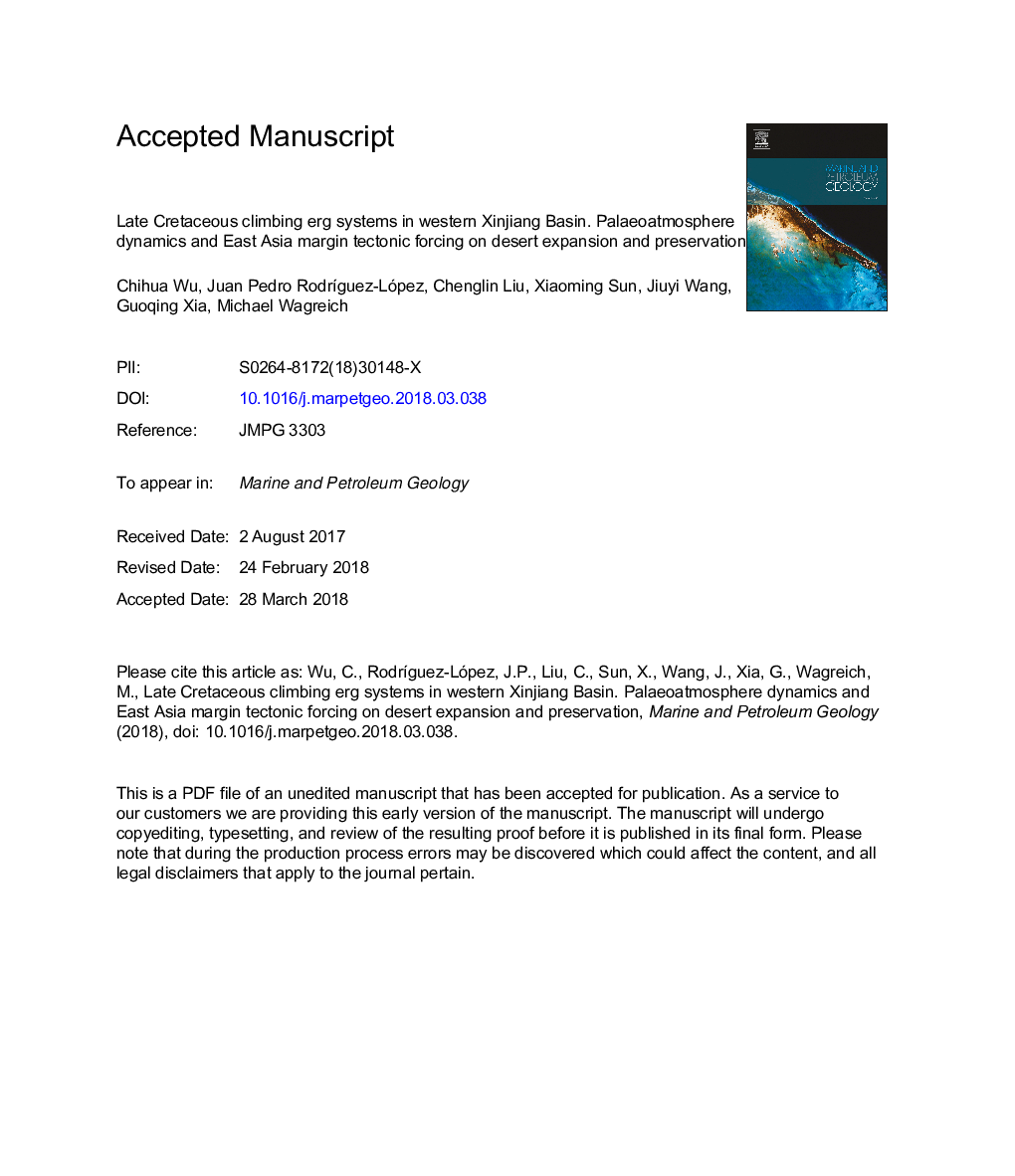| Article ID | Journal | Published Year | Pages | File Type |
|---|---|---|---|---|
| 8909126 | Marine and Petroleum Geology | 2018 | 52 Pages |
Abstract
This study reassesses the terrestrial deposits of the Late Cretaceous Tangbian Formation in the western Xinjiang Basin of the South China block. Originally considered to be aqueous deposits, we reinterpret these strata as representing an extensive aeolian system in a desert environment. This paper suggests that the development of aeolian deposits in the Tangbian Fm. represents the culmination of the Late-Cretaceous desertification that followed the relatively humid early Late-Cretaceous epoch in the interior of South China. The area was dominated by subtropical high-pressure systems on a planetary scale, combined with coastal mountains caused by sustained orogenic activity. The interaction between subtropical high pressure systems and topographic conditions ultimately caused the development of a tropical desert climate, characterized by an extensive dry climbing aeolian dune system. We propose that the coastal mountains not only blocked moisture transport from the ocean and led to the aridification of South China interior, but also exerted a control and transformed the original prevailing surface-wind pattern.
Related Topics
Physical Sciences and Engineering
Earth and Planetary Sciences
Economic Geology
Authors
Chihua Wu, Juan Pedro RodrÃguez-López, Chenglin Liu, Xiaoming Sun, Jiuyi Wang, Guoqing Xia, Michael Wagreich,
